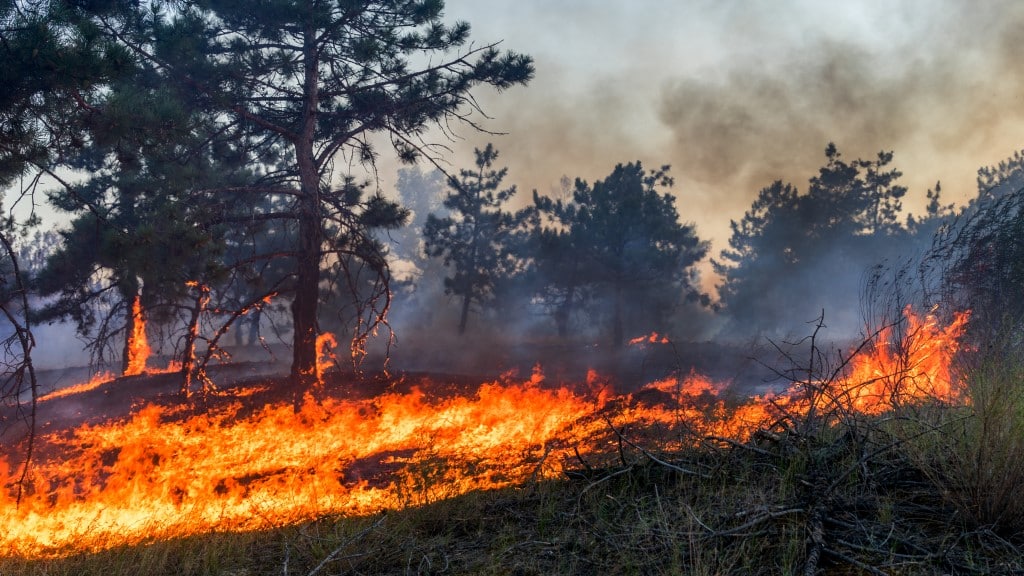Advanced wildfire research could pave the way for increased infrastructure safety
- October 20, 2023
- 10:11 am


Iain Hoey
Share this content
Wildfire modelling has seen significant advancements over the past decade, with researchers at UBC Okanagan stating that catastrophic damages, such as those experienced in Fort McMurray, Alta., may become more preventable in the future.
UBC Okanagan’s innovative wildfire research
The latest in research comes from Dr. John Braun and Dr. Kevin Hanna, who are pioneering members of the newly established US-Canada Centre on Climate-Resilient Western Interconnected Grid.
Their work emphasises the urgency for more refined wildfire prediction models and the importance of enhancing data access to minimise or halt destruction to essential infrastructure across North America.
“Today’s technology allows us to gather much more high-quality data than even a decade ago,” said Dr. Braun, currently a Professor of Mathematics and Statistics at UBC Okanagan’s Irving K. Barber Faculty of Science.
Improved data collection tools, combined with a heightened focus on topography – including the use of satellites and drones – have the potential to markedly improve fire models.
According to Dr. Braun, these advancements are particularly useful in assessing fire spread rates in mountainous regions.
Properly incorporating this information can considerably boost the precision of fire models, paving the way for optimised firefighting strategies and infrastructure safety evaluations.
Fire spread models: A focus on predictability
Dr. Braun’s research primarily explores fire spread models, especially those stochastic models which factor in uncertainties.
Such models can produce a broader and more dependable set of predictions compared to deterministic models that provide a single probable outcome.
He points to the 2016 Fort McMurray fire as an example, suggesting that utilising advanced stochastic models might have drastically enhanced decision-making and resource distribution, possibly preventing extensive destruction and losses.
It’s worth noting that the Fort McMurray fire remains the most expensive disaster in Canadian history, causing a staggering $9.9 billion in damages.
This fire obliterated 2,400 residences and necessitated the evacuation of 88,000 individuals.
When discussing the response to this fire, Dr. Braun said: “Initial calculations showed a five per cent probability that the fire could reach the city limits by 6 or 7 pm—which is actually about when it did.
“If they had known this, they might have made a different decision.
“These models serve as essential decision support tools, improving both infrastructure safety and firefighting efforts.”
The researchers’ goals also encompass enhancing risk and vulnerability evaluations used in project planning.
Dr. Hanna’s work specifically looks into the details required by regulators for the green light on power projects within Canada.
Their combined research aims to set up steadfast procedures for gauging risk and safety factors along electric transmission paths, ensuring resilience against sudden calamities like wildfires.
“This project provides a unique platform to unify various research disciplines for addressing energy resiliency and security in the face of evolving climate challenges,” Dr. Hanna, an Associate Professor in Earth Sciences and Director of UBC’s Centre for Environmental Assessment Research, explained.
The research centre boasts funding of US$5 million from the US National Science Foundation and an additional C$3.75 million from the Natural Sciences and Engineering Research Council of Canada.
This collaboration encompasses 11 North American universities and institutes dedicated to confronting the escalating challenges posed by wildfires, heatwaves, droughts, and floods.
Such severe climatic incidents not only put human lives and the environment in jeopardy but also endanger the power grid that supplies electricity to millions.
This grid extends over two Canadian provinces and 14 western states, catering to approximately 80 million individuals across a vast 4.66 million square kilometres.
“This will help safeguard infrastructure, particularly power lines and natural gas systems, and potentially save billions in damage and replacement costs,” added Dr. Hanna.
IFSJ Comment
The advancements in wildfire research, as highlighted by the dedicated team at UBC Okanagan, signal a positive shift towards proactive measures in managing wildfires and their associated risks.
By harnessing today’s cutting-edge technologies and methodologies, there’s a potential to not only safeguard critical infrastructure but also to ensure the safety and well-being of communities at large.
The collaboration between multiple North American institutions, funded generously, indicates a concerted effort to address the multifaceted challenges posed by climate change, thereby benefiting societies and economies in the long run.

